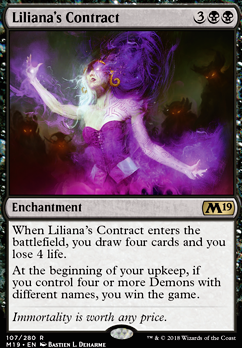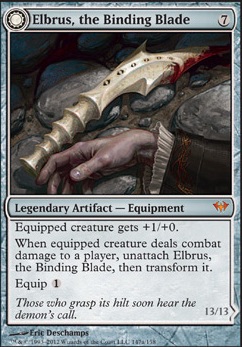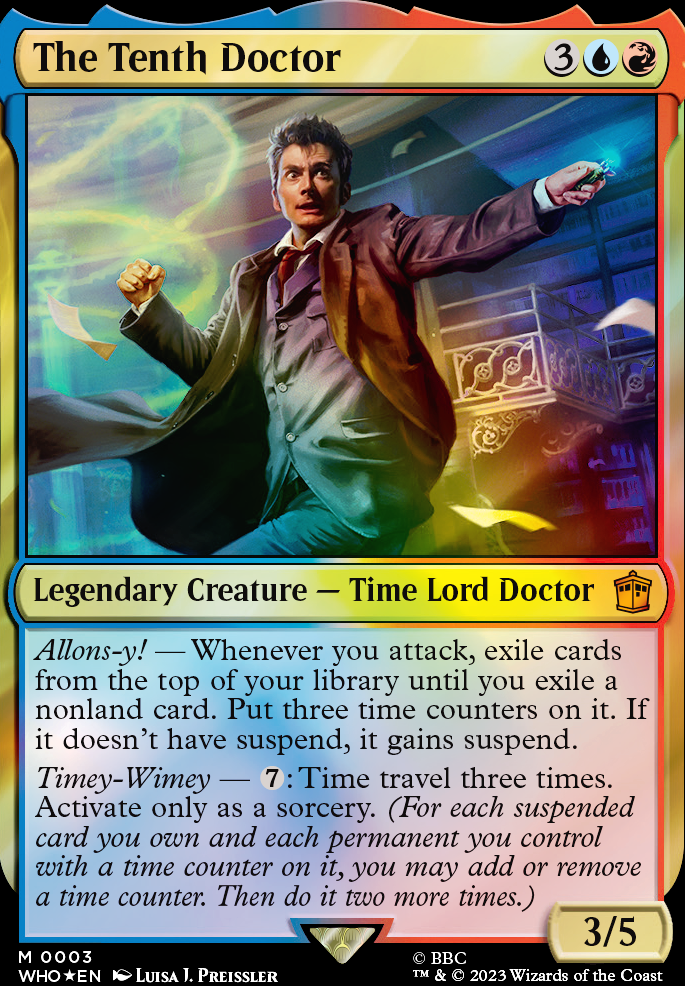Land (33)
-
1x
Ancient Tomb

-
1x
Arid Mesa

- 1x Badlands
-
1x
Blazemire Verge

-
1x
Blood Crypt

-
1x
Bloodstained Mire

-
1x
Command Tower

-
1x
Dragonskull Summit

-
1x
Geier Reach Sanitarium

-
1x
Graven Cairns

-
1x
Lotus Field

- 1x Lotus Vale
-
1x
Luxury Suite

-
1x
Marsh Flats

-
2x
Mountain

-
1x
Mutavault

-
1x
Nykthos, Shrine to Nyx

-
1x
Polluted Delta

-
1x
Prismatic Vista

-
1x
Rakdos Carnarium

-
1x
Raucous Theater

-
1x
Scalding Tarn

-
1x
Shadowblood Ridge

-
1x
Spinerock Knoll

-
1x
Sulfurous Springs

-
4x
Swamp

-
1x
Urborg, Tomb of Yawgmoth

-
1x
Verdant Catacombs

-
1x
Wooded Foothills

Artifact (7)
Creature (22)
-
1x
Abyssal Harvester

-
1x
Ancient Copper Dragon

-
1x
Anger

-
1x
Anje Falkenrath

-
1x
Archfiend of Despair

-
1x
Bloodletter of Aclazotz

-
1x
Bloodthirster

-
1x
Doom Whisperer

-
1x
Gray Merchant of Asphodel

-
1x
Hellcarver Demon

-
1x
Herald of Slaanesh

-
1x
Immersturm Raider

-
1x
It That Betrays

-
1x
Karlach, Fury of Avernus

-
1x
Moraug, Fury of Akoum

-
1x
Moria Scavenger

-
1x
Rakdos, Lord of Riots

-
1x
Sire Of Insanity

-
1x
Tergrid, God of Fright
 Flip
Flip
-
1x
Treasonous Ogre

-
1x
Valgavoth, Terror Eater

-
1x
Vilis, Broker of Blood

Instant (13)
Commander (1)
Sorcery (18)
-
1x
Agadeem's Awakening
 Flip
Flip
-
1x
Buried Alive

-
1x
Demonic Counsel

-
1x
Demonic Tutor

-
1x
Doomsday

-
1x
Exhume

-
1x
Faithless Looting

- 1x Incarnation Technique
-
1x
Jeska's Will

-
1x
Living Death

-
1x
Mizzix's Mastery

-
1x
Persist

-
1x
Reanimate

-
1x
Repay in Kind

-
1x
Toxic Deluge

-
1x
Victimize

- 1x Wheel of Fortune
-
1x
Wheel of Misfortune

Enchantment (6)
Sideboard
Artifact (3)
Creature (1)
Enchantment (2)
Instant (2)
Maybeboard
Creature (17)
-
1x
Abhorrent Overlord

-
1x
Burning-Rune Demon

-
1x
Dockside Extortionist

-
1x
Generator Servant

-
1x
Griselbrand

-
1x
Kuro, Pitlord

-
1x
Lord of the Void

-
1x
Master of Cruelties

-
1x
Pestilence Demon

-
1x
Rakdos, Patron of Chaos

-
1x
Rakdos, the Showstopper

-
1x
Rune-Scarred Demon

- 1x Seizan, Perverter of Truth
- 1x Shadowgrange Archfiend
- 1x Tectonic Hellion
- 1x The Balrog of Moria
-
1x
Varragoth, Bloodsky Sire

Artifact (6)
Sorcery (15)
-
1x
Cathartic Reunion

-
1x
Corpse Explosion

-
1x
Feed the Swarm

-
1x
Mana Geyser

-
1x
Patriarch's Bidding

-
1x
Peer into the Abyss

-
1x
Reforge the Soul

-
1x
Seize the Spotlight

-
1x
Shatterskull Smashing
 Flip
Flip
- 1x Surge to Victory
-
1x
Tormenting Voice

-
1x
Vandalblast

- 1x Wild Guess
-
1x
World at War

-
1x
Yawgmoth's Will

Enchantment (6)
Suggestions
Updates Add
Comments
Attention! Complete Comment Tutorial! This annoying message will go away once you do!
Important! Formatting tips — Comment Tutorial — markdown syntax
Please login to comment
Casual
94% Competitive
| Top Ranked |
|
| Date added | 7 years |
| Last updated | 3 months |
| Legality | This deck is Commander / EDH legal. |
| Rarity (main - side) | 22 - 0 Mythic Rares 52 - 2 Rares 13 - 5 Uncommons 7 - 1 Commons |
| Cards | 100 |
| Avg. CMC | 3.64 |
| Tokens | Copy Clone, Foretell, Orc Army, Shapeshifter 3/2 C, Treasure, Zombie 2/2 B |
| Folders | Decks that look good, Witty Bulger & The Witty Hill Gang, inspiration, Rakdos, fun, Wants, Commander, Edh decks, owo, Cool |
| Votes | |
| Ignored suggestions | |
| Shared with | |
| Views |










